Sharlyn J. Lauby's Blog, page 95
July 21, 2019
How to Convince Senior Management that Training Records are Important – Ask #HR Bartender

I must admit that keeping training records is one of those things
that I’ve always just done without thinking about why. Well, this HR Bartender
reader was challenged to come up with a reason.
Good afternoon, Sharlyn. I’ve had the
pleasure of sitting in on a couple of your presentations at recent SHRM
Conferences, and I’m a fan of your book, “Manager Onboarding.” I’ve noticed
that you answer reader questions and hope that you can assist.
Over the past couple of years, I’ve
been asked a few times why the training and development team logs and maintains
employee attendance records for customer service training, workshops,
leadership training, etc. My usual answers about compliance, liability,
consistency, return-on-investment, performance records, etc. don’t seem
convincing enough. And, delegating this tracking to departments isn’t
consistent with what I’ve learned as training program management best
practices.
Is HR tracking training too old
school? Is there a better way? Do you have any insights or guide me in the
right direction? Thank you for your time.
I’m so
glad this reader shared their situation. My initial thought is that their
“usual answers” about maintaining training records are spot on. But I wanted to
get another perspective, so I reached out to Hawley Kane, head of learning and development at Saba Software. They provide cloud-based talent management solutions, including
enterprise learning, performance management, and collaboration solutions.
Hawley,
let’s start by discussing training records. What are the top five reasons that
organizations track training attendance?
[Kane] Every organization wants to make the most of its learning
and development (L&D) investments, but they don’t know what’s working
unless they have the data to back it up. Training and development teams should
track all learning activities in how they drive performance and business
outcomes. Here’s a quick breakdown of the what
and why:
Learning completion and adoption rates.
Tracking attendance is the simplest metric but
it’s still important! Business leaders need to know how many of their employees
– and often, specifically who – are
taking the available training, including compliance courses, specialized
workshops to upskill, and leadership development courses. Now, tracking
attendance is a good place to start but organizations need to dig deeper into
the data to show the true value of their training programs.Employee engagement impact. Employee
engagement is a key metric that matters to your organization’s leadership
because highly engaged employees can boost performance, innovation and
productivity while reducing turnover and hiring-related costs. One way you can
measure how L&D impacts employee engagement is to track the retention rate
of those who participate in voluntary learning programs compared to everyone
else. It can give you insights into how valuable employees perceive this
voluntary training to be, and whether that correlates to employee retention.Links to employee performance. I’m
going to say this a lot because we
all need to hear it more: Employees need to take on learning and training that
aligns to the organization’s business objectives. Tracking L&D to make the
link between learning and performance is critical in showing the return on
investment (ROI) of your learning programs. Are your top performers
participating in voluntary L&D activities? Which ones? Are they – and their
respective departments – hitting their goals faster and more effectively as a
result? Creating a personalized learning
culture for future success. A recent LinkedIn
Learning report found that employees prefer to learn
at work, at their own pace, and at the point of need. By tracking how, when and
why employees participate in learning activities, organizations can glean the
data they need to get ahead of the curve and enable a personalized learning
experience that gets results.In
this age of digital disruption, skills can become obsolete within months. So it’s critical that an
organization prepares
its workforce for digital transformation. Guiding employee-driven career
development. Tracking training and learning
activities shows an employee’s interests and the skill gaps they’re bridging
(especially the training they’re doing voluntarily). When HR leaders and
managers know an employee’s desired career path and can see the training
they’re doing to get from where they are to where they want to be, they can
give feedback, coaching, and present opportunities for role changes as they
become available.
Now that
we know WHY HR departments track training, HOW should they track it?
Specifically, can technology help?

[Kane] It goes without saying that you need the right strategy and
tools to track employee training so that HR and people leaders can do something
meaningful with the results.
Employee L&D isn’t a one-size-fits-all operation;
organizations need to create personalized learning experiences to maximize the
impact of their training programs. Delivering a personalized learning
experience means the HR technology used to deploy and track learning needs to
be hyper-connected to performance outcomes as well. This puts an employee in
the driver’s seat of their own development experience; an employee’s
challenges, career aspirations, learning preferences, and skills all feed into
a personalized, continuous learning experience.
An organization’s learning platform needs to connect to the
performance side of employee development, which also needs to align to the organization’s business goals. Your HR
technology solution needs a robust analytics dashboard that allows HR, managers
and executive leaders to review team and company learning metrics so that they
can see (in real time) where their people are succeeding and where they – or
the organization – need additional support.
A great example of this in action is when the City of
Houston committed to getting its 22,000+ employees to link learning and
performance, which helped them net a 280
percent return on investment by increasing revenue and decreasing turnover
(not to mention boosting engagement and performance in the process!).
(Editor’s Note: The City of Houston is a Saba Software customer.)
I want to
get a little granular here. The reader talks about departments tracking
training. If the company used a technology solution, can tracking become an
organizational responsibility (versus an HR responsibility)?
[Kane] There’s a growing trend to bring analytics to
decision-makers across the organization so that leaders at all levels can
proactively address learning needs. Learning and training analytics are being
tied into larger developmental and business goals, companywide. Leaders are
increasingly realizing that learning drives performance, which in turn drives
business outcomes. When organizations’ goals are aligned at departmental, team
and individual levels, employees have clarity on what results they’re working
towards.
Using a technology solution makes tracking training so much easier
for both organizations and HR to see what learning programs are working, which
ones aren’t, and what that means for individuals, teams, departments, and the
organization as a whole. HR needs to present itself as a strategic business
partner to the organization and being able to measure, understand, explain and
share the impact of learning outcomes is a key part of demonstrating that
value. Going a step further and teaching others how to do it themselves? That’s
invaluable.
The reader
note mentions “training program management best practices.” Is there a best
practice that organizations should be aware of (tracking or otherwise)?
[Kane] Oh, yes. If learning leaders only do one thing, they should
be linking learning activities to performance outcomes. (I did mention that I’d
say this again!) Learning is only as valuable as the outcome it delivers – to
employees and to the organization. Make sure that managers are encouraging
their direct reports to make time for learning activities and then discuss how
that L&D can be applied in their current or aspirational roles during
their 1:1 meetings.
Remember, in order for this to be effective, organizations need to
have a clear L&D strategy in place. HR and learning leaders need to know what
type of content their people need in order to boost performance and bring value
to the organization. Keep the lines of communication open between learning
leaders and the C-Suite. Delve into the data regularly and ask your people for
feedback. You’d be surprised at the number of valuable insights currently going
unnoticed.
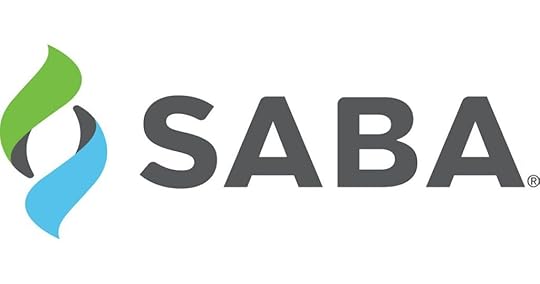
Last
question. What would you say is the “next big thing” when it comes to training
administration?
[Kane] Brandon Hall Group’s research suggests that when it comes
to L&D and metrics, simply linking those learning activities to performance
outcomes are still a huge obstacle for many organizations. Only 51 percent of
companies said they were effective at measuring formal learning – and that
number drops
significantly when it comes to other forms of learning like informal or
experiential. There’s still much work to be done.
That being said, when it comes to the ‘next big thing’ in training
administration, organizations are increasingly shifting towards building a
Learning Experience (LX) model where content discovery, recommendations,
indexing, pathing, and skills mapping, self-published content and usage
analytics help them optimize and personalize employees’ learning experiences.
Tracking and data analytics factor heavily into creating a
personalized employee learning experience, often powered by Learning Experience
Platforms (LXP), Artificial Intelligence (AI) and Machine Learning (ML). Check out
this recent article by Josh Bersin for more information on the
increasing shift towards LX.
Tracking training isn’t a vanity metric. Tracking L&D
activities is a foundational element of building a unique employee experience
and healthy learning culture that benefits both employees and the business, now
and into the future.
I want to extend a huge thanks to Hawley for sharing her knowledge
and experience with us. If you want to stay tuned into the latest learning and
development trends, be sure to check out
the Saba blog. (FYI – I’m one of the guest contributors over there.)
Because of the challenges in recruiting, learning and development is positioned to become a priority. Not that L&D shouldn’t be important all the time, but let’s face it, over the past few years it’s taken a back seat. Being able to show the connection between L&D and organizational outcomes is essential.
Image captured by Sharlyn Lauby after speaking at the Flora Icelandic HR Management Conference in Reykjavik, Iceland
The post How to Convince Senior Management that Training Records are Important – Ask #HR Bartender appeared first on hr bartender.






July 19, 2019
The Job Candidate Is Interviewing the Company
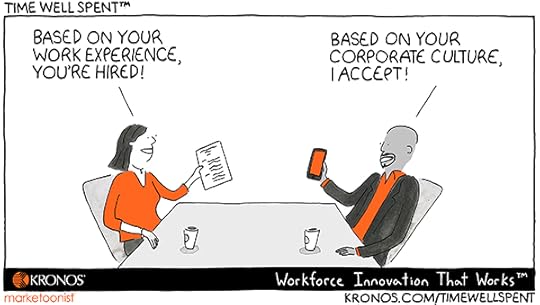
I like to define an interview as a conversation. The reason, of course, is that conversations typically involve two-way communication.
It’s very easy for both job candidates and companies to allow an interview to become a one-way street. The company is the one calling the candidate in for a job interview. The interview usually spends more time talking about the company, the job, and the candidate’s qualifications for that job. So, candidates spend the majority of their time talking about how they’re the right person for the job.
Today’s Time Well Spent from our friends at Kronos is a good reminder that job candidates need to spend time during the interview process making sure their questions are answered. Not just about the job, but the company and its management as well.
Candidates: Come prepared with questions! Having a handful of questions ready sends the message to a prospective employer that you’re interested in the job. Now, I will admit that some companies do an awesome job of providing information during the interview, to the point that they will answer most of your questions. But that doesn’t mean you can’t ask questions like, “What would current employees say are the top 1-2 benefits of working here?” or “What will be my biggest challenge?”
Companies: Encourage candidates to ask questions! If the job candidate doesn’t have any questions, it’s either because 1) they’ve already made up their mind that the company isn’t a good fit for them or 2) they’re reluctant to ask the question – for whatever the reason. This is a good opportunity for recruiters to say, “I get asked about ABC a lot. Do you have any questions that I can answer?” or “You’re probably wondering about XYZ, let me just upfront the conversation with some additional information.”
Hiring an employee is a partnership. The organization is selecting someone they believe will perform at a high level. The job candidate is choosing a company that will invest in their success. Interviews are the conversations that help both sides make the best decision.
The post The Job Candidate Is Interviewing the Company appeared first on hr bartender.






July 16, 2019
HR Departments Should Have Data Policies
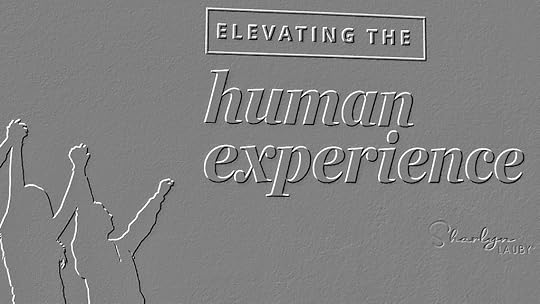
Human resources departments are filled with data. About applicants, candidates, employees, and alumni. This data includes addresses, health information, and social security numbers. HR has assessment data and information from drug/criminal/credit background screening. They have data about vendors – past, current, and future. HR has business intelligence data related to jobs, salaries, benefits, etc. Some of this data is online and some is good old-fashioned paper.
Over the past few years, organizations have put measures in place to deal with customer data, specifically in terms of how to secure data and what actions should happen if (perish the thought) the data is compromised.
I believe HR has always taken data seriously. But it’s time for us to take that to the next level. It’s time for HR departments to develop a marketing-like approach toward their own data. Here are a few things to keep in mind.
Confidentiality remains important. The words HR and confidentiality are constantly used in the same sentence. And there’s nothing wrong with that. In fact, this is our opportunity to use our goal of keeping employee data confidential as the basis for updating our policies and procedures.
HR needs to assess data risk. Time for organizations to do an internal assessment of their risk where HR-related data is concerned. I’m sure there are plenty of companies that want to say, “That won’t happen to us.” But is that a risk the company wants to take?
There should be a data breach policy. I know none of us want to write this policy. Just like we don’t want to write the hurricane procedures, or the what to do if an executive does something unethical procedures. But we have to. And once the procedure is in place, we can breathe a sigh of relief that we have something. Hopefully, we never have to use it.
Ask vendors to create and share their policies. This conversation doesn’t just apply to in-house human resource departments. Companies that provide HR products and services also need to think about data security and protocols. It’s time to address these conversations on the front-end. Make it a part of the initial pitch, “We respect your employee’s data. And this is what we’re doing to keep it secure.”
Put a plan in place for missing files. At minimum, organizations should have a procedure in place for missing employee files. I’ll be honest, in my past corporate roles, I don’t remember having a policy in place. But I also didn’t work someplace where we moved around a lot. Today, workplaces are more mobile, which means files are more mobile. This could make the chances of a file – or a piece of data – going missing a bit more likely.
It’s about more than employee files. Transparency is more than a catchy buzz-phrase. Candidates understand that transparency can help them get the job. Freelancers understand that being transparent can set them apart from the crowd. And vendors understand that transparency can get them the contract. HR departments need to be sensitive to employee data, but also to non-employee data.
Proactively communicate your policy. Finally, once the company has a plan in place, let people know. From a marketing perspective, the company tells customers how their data is being protected. Talk with your legal counsel about proactively sharing how applicant and employee data is being protected. Is there something the company should tell employees as part of the offboarding process?
It’s possible that HR can take some of their cues from the marketing and accounting departments when it comes to data policies and security. That’s a good thing. The important part is recognizing that HR data is sensitive and deserves the same type of security provisions that the rest of the company’s data receives.
Image captured by Sharlyn Lauby at the Qualtrix X4 Summit in Salt Lake City, UT
The post HR Departments Should Have Data Policies appeared first on hr bartender.






July 14, 2019
Hiring Managers: 3 Strategies to Recruit and Select the Best Talent for Your Team
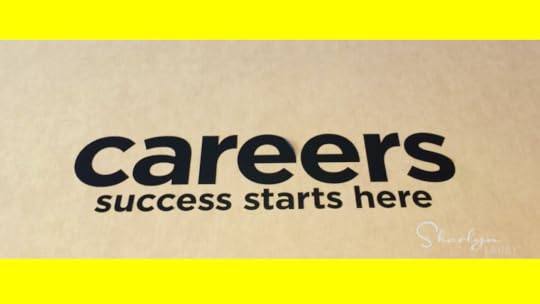
(Editor’s Note: Today’s article is brought to you by James Cook University (JCU), located in Australia . With over 22,000 students, JCU is a world-class university, ranked in the top 2% of tertiary institutions globally. They offer Master programs in Business Administration with special emphasis on leadership, global studies, and conflict resolution. Enjoy the article!)
In the past, we’ve talked about the things that recruiters and talent acquisition professionals need to do in order to hire the best talent. I want to shift focus today a bit and talk about the role of the hiring manager. It only makes sense because the new employee is going to work on their team. And for that reason, hiring managers need to play an active role in the hiring process. Because selecting the wrong person can be costly.
According to reports from Career Builder,74% of companies that admit they’ve hired the wrong person have lost an average of $14,900 for each bad hire. In the top two reasons that the candidate wasn’t the right fit, both involve skills. Either the candidate embellished their skills, or they weren’t trainable for the skills they needed to acquire. While performance coaching and upskilling can be an effective way of building new employee capabilities, it’s important for the hiring manager and the candidate to proactively put those plans in place, versus finding out after the offer has been made.
To avoid expensive recruiting mistakes, hiring managers need to be able to determine which candidates will be the right fit for the role. But it’s not always as easy as it looks. On the surface, the interview process may seem simple. The reality is, recruiting is complicated. Luckily, there are three strategies that hiring managers can use to maximize the hiring process and to get the best outcome for their team.
#1 – Define the role and performance expectations
I realize that no one likes to update job descriptions. That being said, a clear and concise description illustrates exactly what the open position requires, including details such as:
Required knowledge, skills, and abilities (KSAs)Previous work experience Formal educational qualifications Other job details such as hours, responsibilities, etc.Application details
By making these details clear in the job posting, the candidates being screened and interviewed will know what is required. The idea being that the better that job posting, the more likely you will be interviewing suitably qualified interviewees, and the ill-fitting ones will simply opt-out of applying. An ideal time to review the job description and make any updates is during the recruiting strategy meeting (aka intake interview) with the recruiter.
Consider that the time spent preparing during the recruiting strategy meeting is an investment in a better interview. Instead of spending valuable interview time talking about details that could have been shared in the job posting, hiring managers can spend time learning more about the candidate and setting expectations.
A better job description and posting can help the organization and it can also help a candidate come to the interview more prepared. We all know that, if a candidate comes into the interview unprepared, they can get nervous, and we might not learn enough about a candidate’s KSAs. Preparing candidates not only allows the hiring manager to get the most out of the interview, but it sends the message that the company has the type of culture where people are prepared and communicative.
Finally, don’t forget – the candidate is interviewing the company too! Providing the candidate with a realistic job preview is a great way to enhance the hiring process and facilitate constructive conversations during your interview. These constructive conversations allow performance expectations to be set for the position starting on day one.
#2 – Spend Time Interviewing and Selecting the Right Candidate
Every day that a job opening doesn’t get filled is a hardship on the operation. A bigger hardship is settling or not hiring the right person. I’ve seen too many hiring managers rush the selection process to simply “fill the requisition” and end up regretting it. In fact, I’m embarrassed to say that I’ve done it myself when I had to hire employees for the human resources team.
Interview planning is particularly important, as it gives you the chance to build an experience that will get the candidate excited about the organization. Spend time thinking about the right behavior-based interview questions. By investing in the interview experience, hiring managers can identify the areas they want to focus their conversation and any skills gaps to follow-up on.
Also, I’m starting to hear more organizations use interviews as an opportunity to show off the company culture. Don’t feel limited to a formal interview in a boardroom. Go and get a coffee to make the interview more casual, which could help the candidate relax and open up more. The hiring manager might enjoy the relaxed setting as well. There’s no rule that you have to rush through interviews. Take your time to carefully assess the right person for the team.
Once the interviews are completed, it’s equally important to dedicate time to the selection process. This is the person who is going to receive the job offer. Properly evaluate candidates thorough the use of assessments, background screenings, reference checking, etc. It will help you make the best decision.
#3 – Let the Candidate Spend Time with the Team Before Hiring
A study from UK recruiting firm Robert Half showed that 87% of leaders found that their most successful hires were a great cultural fit. Let’s be clear, we’re not talking about a similar-to-me bias. New hires need to be able to work successfully in the organization. They need to get along with their co-workers. Hiring managers should spend time during interviews learning about a candidate’s soft skills, like communication, problem-solving, and critical thinking. One way to do that is by creating an interviewing process that allows candidates to meet the team.
I’ve always been a big fan of collaborative hiring for two reasons. First, it allows the team to buy-into the candidate selection. And if they’re bought in, then they will help the new hire become successful. The second reason is that it starts the relationship building process. On day one, it makes sense for the new hire to know more people than the recruiter and hiring manager. Collaborative hiring adds some faces to the process. So, when a new hire has a question that they might be a bit reluctant to ask HR or their boss, they can reach out to some of the people they met during the interview.
If you use this approach, it’s important to let the team know that they’re meeting a candidate and give them some guidance on the things they can legally ask about. Hiring managers can decide if they want to create a more formal setting and be a part of the conversation or make it more casual and leave the candidate alone with the team.
Better Managers Can Hire Better Talent
Remember that old saying about “people don’t leave jobs, they leave managers”? Well, I’m not bringing this up to be mean toward hiring managers. However, there’s some truth in the statement. If a candidate interviews with a manager who is disorganized, rushed, and not a great communicator, then chances are they won’t take the job. Because they’ll think that’s what the manager is like all the time.
As much as the hiring process is about bringing in a new employee, it also an opportunity to show candidates that the company has a good management and leadership team. Managers can pursue a Master of Business Administration to develop their leadership skills and stay relevant in an increasingly competitive business world. And the good news is this learning can happen online.
Hiring managers are looking for team members who can deliver results. Candidates want to know that they’re going to work for an organization with a terrific culture and a manager who has the leadership skills to support them. The place where everyone gets to show how good they are is the interview.
The post Hiring Managers: 3 Strategies to Recruit and Select the Best Talent for Your Team appeared first on hr bartender.






July 12, 2019
Bookmark This! A Guide for Conducting Effective 1:1 Meetings
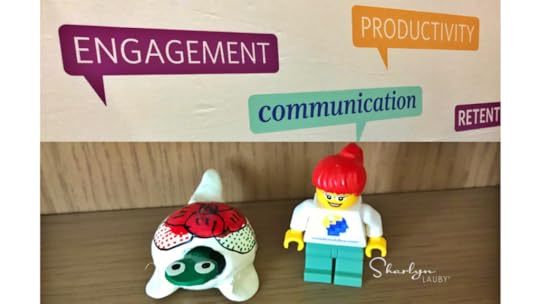
Organizations care about performance. Employee
performance is what helps the organization achieve its goals. Regardless of
your organization’s philosophy about the annual performance review, one-on-one
meetings are a valuable tool for managers to coach employees about their
performance.
Please note: I didn’t mention the word
discipline. Performance coaching conversations should not immediately conjure
up images of disciplinary action. Performance coaching is about telling
employees what they do well as much as it is about helping employees move past
a performance deficiency. And there are plenty of times when employees need to
know about an area of their performance that needs improvement which doesn’t
involve disciplinary action.
Okay, I’m off my soapbox about coaching and
discipline. Thanks for listening. Here are four articles I wrote on the Saba
Software blog about one-on-one meetings and their value in creating high
performance.
A
Manager’s Guide to Successful 1:1 Meetings With Employees The perfect one-on-one meeting is casual and
conversational. It’s also consistent, and that consistency brings trust and
preparedness. To help managers prepare for their next one-on-one meeting,
bookmark this page and share it around your office. Also, download the employee
feedback and coaching templates to use as a conversation guide.
An
Employee’s Guide to Successful 1:1 Meetings With Your Manager Many organizations already train and coach
managers on how to conduct a one-on-one meeting. Organizations should make the
investment and do the same for employees. After all, they’re one-half of the
1:1 meeting and need to take responsibility for their side of the conversation.
Employee performance will improve when they’re able to properly prepare and
participate in the meeting.
Use
1:1 Meetings for Learning and Watch Your Business Thrive One-on-one meetings allow the organization to
make learning a part of their culture, rather than an event that only happens
in the classroom. Bringing a learning component into 1:1 meetings benefits
everyone. Managers can discuss performance with employees on a regular basis.
Employees become more engaged because the organization cares about their
success.
How
to Conduct a Learning Session During a 1:1 Meeting Learning conversations do not have to involve
platform skills and a bunch of fancy props. Rather, they simply require
teaching managers how to structure and deliver effective 1:1 meetings. This
5-step method is an ideal activity to include in the company’s management
development or manager onboarding program.
Effective 1:1 conversations can be a powerful way to increase employee engagement, accelerate employee achievement, and improve overall organizational performance. To create effective one-on-one meetings, organizations need to provide managers and employees training and tools to properly prepare and communicate. I hope you’ll find these tools useful for your teams.
The post Bookmark This! A Guide for Conducting Effective 1:1 Meetings appeared first on hr bartender.






July 9, 2019
Human Resources: 6 Unconventional Skills to Develop for Future Professional Success
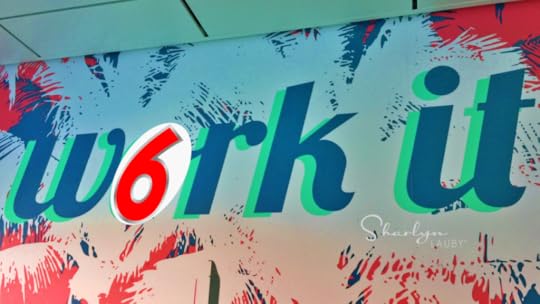
We spend a lot of time on HR Bartender talking
about what organizations need to do in order to be successful: things like
candidate experience, employee experience, company culture, etc. One of the prerequisites
of developing a world-class organization is having a human resources department
that can partner with the business to make it happen. I hate to say it, but a
mediocre HR team may or may not have the bandwidth to build a best place to
work.
But that doesn’t mean you’re out on your own. I just finished reading the book, The CMO of People: Manage Employees Like Customers with an Immersive Predictable Experience that Drives Productivity and Performance by Peter Navin and David Creelman. This book offers a unique perspective on the HR profession and how to build a Human Resources function that is up for the task of creating that best company the C-Suite is looking for.
You know I’m not going to give away the entire
book. You’ll definitely want to pick up a copy for yourself. But one chapter
that really spoke to me was on “How to Build an Unconventional HR Team”. Navin
and Creelman highlight six skills that human resources professionals should
focus on for their professional development.
Collaboration shows a willingness to work with others. Often in HR, we can be accused of being the “department of ‘no’” and this can exclude us from critical business conversations. While it’s true there will be times when we do have to say no to protect the business, there are also times when we can open the HR lab for a little experiment or do an A/B Test to determine the best strategy. Curiosity demonstrates our ability to learn, explore, and look for creative solutions that all stakeholders can support. I agree with Navin and Creelman that sometimes the word “creative” can conjure up images of artistic ability. It can also be associated with bending the rules (and not in a good way). It’s time to think of curiosity as a positive attribute that is focused on creating a win.Data and Technology Savvy have to be on the list. You simply cannot be a human resources professional today without having some level of competence in technology and data analysis. You do not need to be a computer programmer, but Human Resources departments without a tech component will be left behind. Employees are looking for modern work experiences that match their personal lives.Executive Presence is defined by the authors as “having the communication and storytelling skills to sell things to skeptics”. I can totally see this being a necessary skill. We can come up with the best ideas in the world but if no one buys into them, then they’re not going to happen. In addition, we have to keep the buy-in of stakeholders, so projects stay fully supported (and funded!)Risk-Taking involves recognizing opportunities, being comfortable with managing risk, and having the judgment to shut down something that’s not working. I must say the last part of that sentence about shutting down projects and programs that aren’t working is so critical. Organizations that want to move forward sometimes need to change the past. Systems Thinking is the ability to see how all of the pieces fit together. Whether that’s within a department or the organization as a whole, HR pros need to understand how the organization works. It’s critical for effective recruitment, onboarding, learning, and planning. It also is a key component of selling ideas to management (#4).
On some level, I could see these skills being
highlighted in a company-wide management and leadership skills training
program. The company might also want to develop some behavioral
based interview questions around these areas to make sure that
future hires have a sense of curiosity or proven skills in collaboration.
I can see “The CMO of People” being required reading for Human Resources pros before going into the department’s annual strategy and budget session. It’s a perfect time to talk about what HR wants to accomplish in the upcoming year and, more importantly, how they’re going to go about achieving it.
Image capture by Sharlyn Lauby somewhere off the coast of Miami, FL
The post Human Resources: 6 Unconventional Skills to Develop for Future Professional Success appeared first on hr bartender.






July 7, 2019
The News Is Part Of Your Employment Brand

I ran across an interesting article in The Manifest titled, “How Do Employees Act When Faced with Unethical Company Behavior?” The article talks about how candidates want to work for companies with ethics, and will choose not to accept offers of higher pay at companies with a history of unethical behavior. I’m not sure this is a surprise. Or at least it shouldn’t be.
What I did find interesting was that 79 percent of employees will not accept a job with a higher salary from a company that failed to act against employees who were involved in sexual harassment. We know that harassing work cultures inflict damage on a company’s workers and its bottom line. In addition, there are times when employees who report workplace sexual harassment are at risk for social isolation, retaliation, anxiety, and depression. Despite these hardships, most employees feel a need to act against unethical behavior that directly impacts them or coworkers.
In addition, employees will not consider
accepting a raise from a company if they find the company selling or using
customer data without consent (76 percent), creating environmental problems (72
percent), and paying female and minority employees less than others (71 percent).
Finally, The Manifest article said that when
employees decide whether to accept a raise, they are most likely to tolerate
companies that give political donations to candidates they personally dislike
(54 percent). Overall, it appeared from the study that employees are more
likely to tolerate disagreeable company behaviors that are driven by politics
or economics, instead of ones that directly impact coworkers or them.
My takeaway from the article is that the company’s employment brand is influenced by all of these things: harassment in the workplace, employee retaliation, data security, sustainability, equality and yes, even politics. Where do we hear about these topics? Yep, in the news.
What the media says about our organizations
matter. If they say the company is a respected employer, people hear that. And
when the media reports that unethical behavior was pervasive within the
leadership team, they hear that too. Obviously, the way to impact the news
about your organization is to do good things for all of the right reasons. Remember
the PESO Model (paid, earned, shared, and owned media).
This is a clear example of earned media. Organizations need to have an earned
media strategy. Because it matters.
This article was enlightening both in terms of the behaviors that employees will (and will not) tolerate as well as the reminder of how the news can impact a company’s brand. Organizations can’t simply assume their own brand messaging is sufficient. Employees are looking for resources like former and current employees AND the media to get confirmation that what a company is saying about themselves is accurate.
Image captured by Sharlyn Lauby while exploring the Wynwood District in Miami, FL
The post The News Is Part Of Your Employment Brand appeared first on hr bartender.






July 5, 2019
Organizations and Employees: We Are In This Together
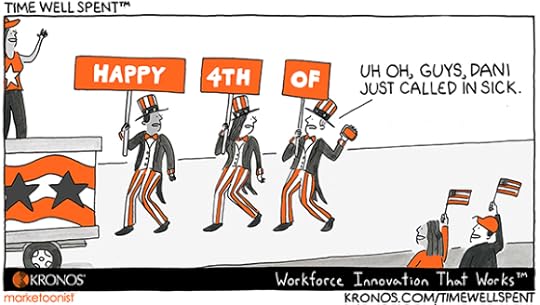
It’s Independence
Day weekend here in the United States. On July 4,
1776, the Continental Congress declared that the American colonies were united,
free, and independent states. I’m sure every country has their own version of
our Independence Day, where they celebrate their own unique history. It’s a
reminder that even with all of our faults, the success of our country lies with
our people.
This Time Well Spent
cartoon from our
friends at Kronos reminded me that companies celebrate
too. They celebrate when the organization was founded. They celebrate when new
employees arrive. And they realize that the success of the company is in the
talent they surround themselves with.
When one person is missing, the whole team is impacted. We already knew this. The cartoon makes light of the last person in the message calling out sick. And of course, it impacts the entire message. But sometimes we forget that something as small as a person showing up 5-10 minutes late can impact the entire team. Organizations need to make sure employees understand how their actions affect everyone.
Help employees establish priorities. Our lives are filled with competing priorities. It’s important for individuals to understand how to prioritize. Because sometimes the top priority isn’t obvious. If companies are concerned that employees don’t know what the most pressing task is…then tell them. It doesn’t have to be communicated in a condescending way. Just let employees know that the specific task has moved up to priority number one.
Having a backup plan is essential. When high-profile activities happen, organizations should have a backup plan in place. People do get sick. Emergencies happen. It’s worth taking a few moments to think about the challenges that can happen and how they should be handled. It also helps employees immediately pivot in a new direction. If an employee calls in sick (like in the cartoon), then there’s someone else to take their place. Or maybe one person carries two signs.
Companies and employees should work together
to make the organization successful. The way that happens is by organizations
building a
company culture that encourages teamwork and
collaboration. For employees, it’s understanding how their role helps the
organization, prioritizing their work, and being prepared to change with all of
the shifting priorities. Together, organizations and employees can build their
own future.
The post Organizations and Employees: We Are In This Together appeared first on hr bartender.






July 4, 2019
Independence Day and Being Grateful

Today is Independence Day here in the United States. A time for celebrating our nation’s freedom. I wanted to share with you a picture from earlier this week.
Mr. Bartender and I had the honor of visiting the NASA and witnessing the test launch of the Orion spacecraft. It was a wonderful educational experience about the U.S. space program (and great fun!)
Thanks for being an HR Bartender reader. We truly appreciate you!
The post Independence Day and Being Grateful appeared first on hr bartender.






June 30, 2019
Considerations When Eliminating Employee Benefits – Ask #HR Bartender

A couple of months ago, I published an
interview with Samuel Hoffman with
Foley & Lardner, LLP about what
organizations need to consider when grandfathering employee benefits.
In response, I received this reader comment.
Hi. Thanks for the helpful article. I recently started at a small company that has some grandfathered plans for a few of the first employees of the company. As we’re growing, it’s becoming more of a burden to have grandfathered plans for a small handful of employees. Any thoughts on eliminating grandfathered benefits that a company isn’t legally or contractually obligated to provide?
While we
can’t talk specifics, especially because we don’t know the benefits involved, I
do think we can talk about benefit policies and best practices when eliminating
and/or changing benefits. And since Sam did such a fantastic job sharing his
experience when it comes to grandfathering benefits, I asked if he would help
us again and am thrilled that he said yes.
Samuel Hoffman is a partner and business
lawyer in Foley’s California office. He represents health care providers and government
entities in employee benefit matters such as pension plans, compensation, and
bonus programs.
Please
remember that Sam has a regular full-time job as a lawyer and he’s doing this
to give back to the profession. His comments should not be construed as legal
advice or as pertaining to any specific factual situations. If you have
detailed questions, you should address them directly with your friendly
neighborhood labor and employment attorney.
Sam, I know
we’re talking about eliminating benefits, but just to set the baseline for our
conversation, what are the benefits that employers are legally required to
provide. You don’t have to list them all here, but maybe there’s a resource?
[Hoffman] Generally,
the only ‘benefits’ that an employer is required to offer are:
Social SecurityWorkers’ CompensationIn some states and cities, sick leave and/or
a state mandated disability leave program for non-work-related disabilities. Generally, employers are also required to
contribute towards the state unemployment insurance program. Employers with more than 50 employees within
a 15-mile radius are required to offer leave under the Family and Medical Leave Act (FMLA). And in some states, a comparable program
for employers with fewer employees, which is unpaid, but for which health
insurance that was provided to the employee before the leave must continue to
be made available on an active employee basis. Employers with 50 or more employees will be
subject to a substantial fine under the Affordable
Care Act (ACA) if
they do not offer affordable minimum essential health insurance coverage to
their employees.
Employers can
generally find out what benefits are absolutely required by Googling (or using
the search engine of their choice) the question and looking at various relevant
publications for their state and city.
With
the today’s challenges in recruiting and retaining talent, companies are
thinking about adding benefits all the time. That being said, companies can’t
simply continue to add benefits. Every once in a while, they might need to
phase out or eliminate a benefit to put a new one in its place or because it
doesn’t align with the company’s compensation philosophies. From a legal
perspective, what should organizations be aware of when it comes to the
elimination of an employee benefit?

[Hoffman] For
all benefits that are voluntarily provided by the employer, the employer should
be able to terminate them prospectively. The first thing that employers should
think about before eliminating voluntarily provided benefits is what sort of
notice requirements there are for such termination, arising either by statute
or regulation, and/or by the terms of the plan document.
The best
approach is to start by looking at your plan document and determining what it
says about termination and notice. For health insurance benefits, you will
generally need to give 60 days’ advance notice if you have more than 50
employees and are subject to the Affordable Care Act’s summary of benefits and
coverage requirement. For other types of benefits, advance notice is advisable,
but not required, and will be governed on a contractual basis by what the plan
document says.
The employer
should also consider the employee rights to previously accrued benefits, which
in many instances are legally required to be grandfathered, such as vested
retirement benefits or even unvested retirement benefits which the employer
will be required to allow the employee to continue accumulating time toward
vesting, even after the retirement plan is frozen.
Also, many
states require that any vacation or paid-time-off (PTO) that has accrued be
preserved, even if the benefit is discontinued going forward.
As a general
rule, my advice would be that if you are going to eliminate any benefit
prospectively, that you preserve any previously accrued unused benefits under
the program. This is advisable from both a legal and an employee relations
perspective. You should also consider whether eliminating any particular
benefit will have an adverse impact on your employee relations that will
outweigh the savings, both in administrative time and money.
Another
time that I’ve seen companies consider eliminating a benefit is when employees
don’t use it very much. But it’s hard to say to employees, “You’re not
using this benefit, so we’re going to take it away.” Are there some best
practices that employers might want to consider when it comes to underutilized
benefits?
[Hoffman] As
a general employee relations proposition, I find that it is generally a good
idea to offer some new benefit when you are eliminating one that is
underutilized. If that is not possible, then it is recommended that you, in
communicating with employees about the change, let them know that the money you
are saving by discontinuing this underutilized benefit will be used to either
preserve the remaining benefits or perhaps enhance some of them; such as you
could offer more PTO or sick leave if you eliminated another benefit, etc.
I
assume it would be better to give employees notice that a benefit is going
away, versus just saying “This benefit stops effective immediately.”
Is there a good time frame for this? And if the answer is “it
depends”, how can organizations figure out that good time frame?
[Hoffman] As
noted above, other than the few instances where there is a legal notice
requirement, such as eliminating health insurance coverage for employers
subject to the Affordable Care Act, or where the plan document itself requires
advance notice, it is generally just using good judgment for how much advance
notice is given. I tend to agree with you that advance notice is always the
best policy. As far as a rule of thumb, I would suggest that between 30 or 60
days’ notice is good policy from an employee relations perspective.
Similar
to a benefit, companies offer employees perks. What are perks and should
companies follow the same thought process when it comes to eliminating them?
[Hoffman] The
generic term ‘benefits’ refers to items of compensation other than wages. There
is no legal definition for something called ‘perks’, but generally, that term
is used for non-wage benefits that do not involve cash paid to the employees;
i.e., income of a non-cash variety. This can include such things as employee
discounts for employer products, snacks or lunchroom facilities, a company park
for employees to use with their families, discounted movie or amusement park
tickets, special parking spaces for employee of the month, etc. Whenever these
perks are found not to be of much continuing value, and the employer wants to
terminate them, the same sorts of considerations that are discussed above
should be taken into account.
Although
there will generally not be a legal requirement, some form of advance notice is
appropriate and, as I suggested above, some rationale would ideally be given
that includes reference to either new perks or increased existing remaining
perks that are being offered as a result of eliminating the perk in question.

Last
question. If employees complain once the company makes the announcement to
eliminate a benefit, what are the pros and cons of changing your mind?
[Hoffman] Whenever
an employer decides to eliminate a benefit, there is a calculus that the
employer will perform where it weighs the savings from eliminating the benefit
against the cost in employee relations and legal risk. If, after a decision to
eliminate a particular benefit has been announced, the amount of negative
feedback the employer receives is greater than it anticipated, there is nothing
wrong with reversing the decision and turning that reversal into a virtue by
saying that, “We listened to you,” and heard that this is really an important
benefit to you, and therefore decided to retain it after all.
If, on the
other hand, the number of complaints are isolated, then it is perfectly
reasonable to go to those employees and tell them that while you understand
that the benefit was important to them, on a broader employer-wide basis, it
was not particularly valuable and it was better for the employees in general to
offer the new benefit or the newly-enhanced existing benefit in place of the
existing one that is being eliminated. If you can find some way to work with
the employee to transition them through whatever hardship is occasioned by
eliminating the benefit, that is to be explored; otherwise, you simply express
sympathy and continue to move forward with your decision.
I want to
extend a huge thanks to Sam (again!) for sharing his knowledge with us. If you’re looking to stay on top of labor and employment law
issues (and I know you are), be sure to follow their Labor
& Employment Law Perspectives blog – it’s on my must-read list.
Benefits are a tricky and sometimes emotional subject. They represent value to employees, so organizations need to handle them with care.
Image captured by Sharlyn Lauby while exploring San Diego, CA
The post Considerations When Eliminating Employee Benefits – Ask #HR Bartender appeared first on hr bartender.






Sharlyn J. Lauby's Blog
- Sharlyn J. Lauby's profile
- 10 followers



